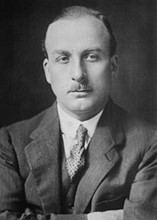Rationale for Inclusion
- Pioneer of Long-Distance Flight: Sir Alan Cobham was a pioneering British aviator known for his extraordinary long-distance flights that pushed the boundaries of what was possible in aviation during the early 20th century. His early career involved several remarkable and ambitious long-distance flights, such as his 1925 flight from England to India and his 1926 flight from England to Australia, which demonstrated the potential of long-range aviation. Cobham’s flights helped prove the viability of commercial air routes and showcased the reliability of aircraft over long distances.
- Pioneering Aerial Refueling: Cobham was instrumental in developing and promoting the concept of aerial refueling, which would later revolutionize military and long-range commercial aviation. He founded Flight Refueling Limited (FRL) in 1934, a company dedicated to developing air-to-air refueling technology. Cobham’s innovations in this area made long-distance flights safer and more efficient and played a vital role in extending the range of military aircraft, particularly during World War II and the Cold War. His contributions to aerial refueling laid the groundwork for modern air refueling practices used by air forces around the world today.
- Founder of Cobham Aviation: Cobham’s legacy as an innovator extended into business, where he founded Cobham Aviation, which became a leader in the development of aviation technologies and defense services. His company played a significant role in providing essential services and technologies to military and civil aviation, such as electronic warfare systems, communications, and aerial refueling equipment.
- Promoter of Public Interest in Aviation: Cobham was a passionate advocate for aviation and spent much of his career promoting public interest and investment in air travel. His series of “National Aviation Day” air displays during the 1930s traveled across Britain, bringing the excitement of aviation to the public. These events, often referred to as “Flying Circuses,” helped to popularize air travel and demonstrated the safety and potential of aviation to the general public.
- Enduring Legacy in Aviation: Sir Alan Cobham’s legacy in aviation is profound and enduring. His early long-distance flights proved the reliability of aircraft over great distances, while his innovations in aerial refueling revolutionized military aviation. His entrepreneurial efforts in founding Cobham Aviation led to the development of one of the world’s most important aerospace technology companies, and his promotional efforts helped foster public interest and investment in aviation. Cobham’s contributions shaped the global aviation industry and left an indelible mark on both military and commercial aviation.

Biography
- Early Life and Education: Sir Alan John Cobham was born on May 6, 1894, in London, England. Cobham’s early life was shaped by a fascination with mechanics and technology. Although he had little formal education in aviation, he became interested in flight as a young man. Cobham joined the Royal Flying Corps during World War I, where he trained as a pilot.
- Personal Life: Alan Cobham was known for his adventurous spirit and love of aviation. In 1922, he married Gladys Hoskins, and together they had two children, with Cobham’s dedication to both his family and aviation defining much of his life.
- Early Career: Alan Cobham had a varied early career; he worked as a teenage commercial apprentice in the City of London, then spent a year working on his uncle’s farm, hoping to make a career in estate management. In August 1914 he joined the British Army and was directed to the Royal Army Veterinary Corps due to his farming experience and attained the rank of Staff Veterinary Sergeant.
- In recognition of his service to aviation Cobham received numerous awards and accolades, including:
- Induction into the International Air & Space Hall of Fame (1997)
- Induction into the Airlift/Tanker Hall of Fame (2016)
- Award Knight Commander of Most Excellent Order of the British Empire (1927)
